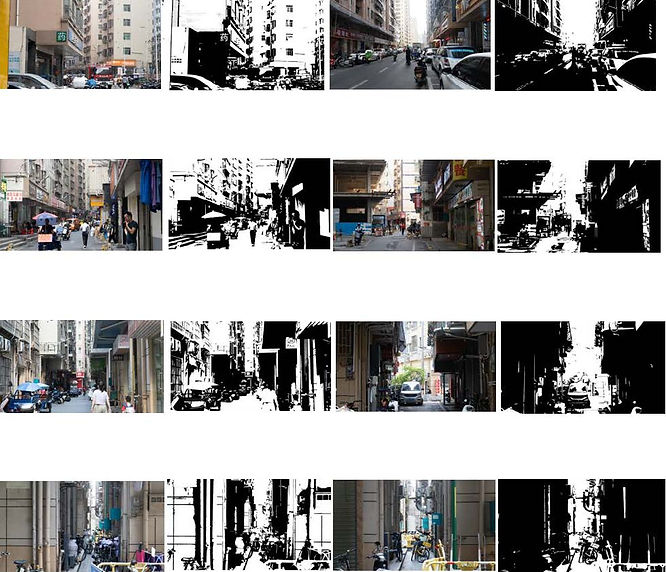Future Spaces Vision Lab
FRACTAL VILLAGES
EXPLORING FRACTAL DIMENSIONS IN SHENZHEN'S URBAN VILLAGES: NATURAL PATTERN FOR STRESS REDUCTION IN HIGH-DENSITY ENVIRONMENTS
Mirna Zordan with Yunan Yang
INTRODUCTION
High density environment and urban village
Increasingly fast worldwide urbanization leads to more and more dense environments within cities. High-density environments are characterized by high population density,high-rise building complexes, and crowded streets. Besides, citizens in high-density cities are facing challenging psychological stress, making urban stress reduction an urgent issue in contemporary urban and architectural studies. Urban villages in Shenzhen represent a unique urban phenomenon, reflecting the city's fast-paced urbanization from a small town into a modern metropolis. These villages effectively accommodate a substantial influx of migrant populations and foster vibrant commercial areas. The high-density construction prevalent in these villages often lacks sufficient public open space, thereby making the streets between buildings critical as public domains. Urban villages exhibit a vibrant street system for non-motorized vehicle and pedestrian activities, diversified living services, and face-to-face interactions among people promoted by its small scale.


METHOD
Calculate fractal dimension(D) in four street typology in Minzhi urban village
Each street typology was analysed to determine its mean fractal dimension (D) for all images in the sample (n = 60). The fractal dimension (D) is a statistical parameter used to measure the complexity of geometric fractal patterns.
RESULTS
The maximum individual D was recorded for main street and it’s approximately 1.9. The minimum individual D was recorded for the back alley at 1.736.
D values of four street typologies in the data set fell within 1.73-1.89, indicating a mid-to-high visual complexity range (D=1.5-2.0) of detailed textures that have more visual excitation and visual diversity. The resulting fractal dimensions of different scenarios often fall into the interval of 1.0– 2.0. The intervals between 1.0–1.3 and 1.3–1.5 are defined as the low-to-mid level, where the scenarios can be seen as ‘well-recognized’ and ‘better for goal-directed navigation’.
CONCLUSION
This study sheds light on an alternative method for the exploration and quantification of spatial visual complexity in high-density urban environments, and more specifically in a unique condition typical of Shenzhen: urban villages. The purpose of this study was to find natural patterns within built high-density, and further compare different street typologies of urban villages according to their fractal character. In the process, methodological considerations were provided, establishing a reference for future research.

D=1.757
D=1.900
D=1.866
D=1.836
D=1.769
D=1.760
D=1.882
D=1.736